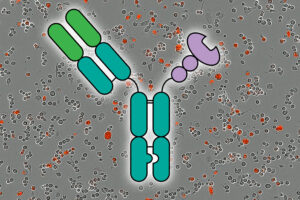
In a groundbreaking study, researchers have leveraged the biological similarities between zebrafish and humans to develop a promising new therapy for kaposiform lymphangiomatosis (KLA), a rare and life-threatening genetic disorder affecting the lymphatic system. The study, published in the Journal of Experimental Medicine, was a collaborative effort between scientists at the Weizmann Institute of Science and physicians from Sheba Medical Center, who identified two drugs with potential to treat KLA, a condition currently without a cure.
The research was sparked when a nine-year-old boy was diagnosed with KLA at Prof. Shoshana Greenberger’s clinic in Sheba’s Safra Children’s Hospital. The boy’s severe shortness of breath led Greenberger to seek a deeper understanding of the disease, prompting a collaboration with Prof. Karina Yaniv of Weizmann’s Immunology and Regenerative Biology Department. Yaniv, who has been studying blood and lymphatic vessel formation using zebrafish models for over two decades, joined forces with Greenberger to explore new therapeutic avenues.
Understanding KLA and the Role of Zebrafish
KLA is characterized by abnormally enlarged and distorted lymphatic vessels, which impair the lymphatic system’s ability to drain fluid from tissues and support essential bodily functions. This often results in difficulty breathing due to fluid buildup in the chest, as well as skin and organ involvement. The disease’s complexity is underscored by its genetic roots; Greenberger’s team had previously traced KLA to a mutation in the NRAS gene, an oncogene known for its role in cancer.
Physicians worldwide have attempted to treat KLA with cancer drugs targeting NRAS, but these treatments often fall short and can cause severe side effects. The failure to save Greenberger’s patient catalyzed further research into the disease’s mechanisms, leading to the innovative use of zebrafish models.
“It was an amazing moment. Just by looking at these mutant embryos, I knew we were on the right track,” said Prof. Karina Yaniv.
Creating the Zebrafish Model
Zebrafish were chosen for their transparent embryos, rapid development, and genetic similarities to humans. The project, led by Dr. Ivan Bassi, involved inserting the mutated human NRAS gene into zebrafish embryos, which then developed lymphatic abnormalities mirroring those in human KLA patients. This model was validated by Amani Jabali, an MSc student under Greenberger and Yaniv’s supervision.
The zebrafish model revealed that in KLA, the mutated NRAS gene remains perpetually activated, causing uncontrolled lymphatic cell growth. This insight provided a foundation for testing potential therapies.
Drug Discovery and Testing
The next phase of the research focused on identifying a small molecule to counteract the disease-causing mutation. Zebrafish embryos facilitated this process, allowing researchers to test drugs on a living organism. However, the challenge was automating the high-throughput screening process, traditionally done manually.
Collaborators developed an automated system to position each embryo under a microscope, enabling consistent imaging and drug effect assessment. An AI-based algorithm measured the embryos’ body area, which was expected to decrease with effective treatment.
Abnormally sprouting lymph vessel cells from a KLA patient were reversed by exposure to the two drugs identified in the study.
Out of approximately 150 tested compounds, two drugs emerged as top candidates, reversing KLA-like symptoms in the zebrafish model. These drugs also showed promising results in human lymphatic cells, blocking abnormal sprouting with fewer side effects than current cancer treatments.
Future Implications and Ongoing Research
The discovery has paved the way for a potential clinical trial to evaluate these drugs in KLA patients. Prof. Greenberger emphasized the importance of a multi-center collaboration to gather sufficient participants due to the rarity of the disease.
Meanwhile, Yaniv’s lab continues to explore other lymphatic disorders using zebrafish models. A key question remains: why does the NRAS mutation severely affect lymphatic vessels while sparing veins and arteries? Solving this mystery could unlock new therapeutic strategies.
“These are longer-term questions,” Yaniv stated, “but what we’ve found in the present study could help patients much sooner. Since the drugs we identified are already approved, getting them repurposed for KLA could move much faster than starting from scratch.”
This innovative research not only offers hope for KLA patients but also exemplifies the potential of zebrafish models in understanding and treating complex human diseases.






